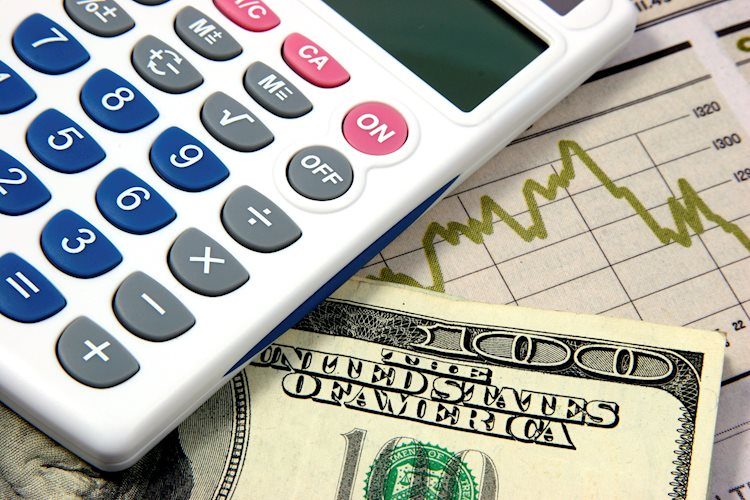- The US Dollar cleared Monday’s losses, and the DXY Index jumped above 106.00.
- The S&P Manufacturing and Services PMI rose to expansion territory above 50.00 in October.
- US Treasury yields recover, allowing the USD to find demand.
The US Dollar (USD) measured by the US Dollar Index (DXY) rose toward 106.30 on Tuesday, seeing nearly a 0.50% gain. While Europe’s S&P PMIs came in weak, the American figures beat expectations, and the US economy appears to be holding onto resilience, which is strengthening the green currency. In addition, US Treasury yields recovered, favouring the upward momentum.
Despite the Federal Reserve’s (Fed) contractionary policies, the United States economy seems to be the last man standing. Focus now shifts to Gross Domestic Product (GDP) preliminary estimates from Q3 on Thursday and Personal Consumption Expenditures (PCE) figures from September on Friday for investors to continue modeling their expectations on the next Fed decisions. Only a minority of traders expect the central bank to change current interest rates, but attention will still be paid to Chair Powell’s speech on Wednesday.
Daily Digest Market Movers: US Dollar recovers from multi-month lows thanks to strong economic activity figures
- After falling to a low since late September, around 105.35 earlier in the session, the DXY Index increased toward 106.30.
- The S&P Global Manufacturing PMI from October came in at 50, beating the expected 49.5, accelerating from its prior reading of 49.8.
- The Services PMI also came in higher than expected at 50.9 vs the expected 49.8 and increasing from its prior reading of 50.1.
- In the meantime, US yields are rising, and the 2 and 5-year rates marched toward 5.10%, and 4.81%.
- According to the CME FedWatch Tool, the odds of a 25 bps hike in December are still low, around 25%. In addition, the Tool suggests that a pause in November is near to being priced in. Focus now shifts to the high-tier data released on Thursday and Friday.
- The US Q3 GDP is expected to have accelerated and the PCE inflation to have decelerated in September.
Technical Analysis: US Dollar Index’s bulls need to retake the 20-day SMA to confirm a recovery
Observing the daily chart, the outlook is neutral to bearish for the short term as bulls are gaining momentum but still are yet to reclaim the 20-day Simple Moving Average (SMA) at 106.30. In the meantime, indicators recovered ground, with the Relative Strength Index (RSI) standing with a positive slope in bullish territory, while the Moving Average Convergence (MACD) gives out decreasing red bars.
On the broader picture, the pair is below the 20-day SMA but above the 100 and 200-day SMAs, indicating a favorable position for the bulls in the bigger picture.
Supports: 106.00, 105.70, 105.50.
Resistances:106.33 (20-day SMA),106.50, 107.00.
US Dollar FAQs
The US Dollar (USD) is the official currency of the United States of America, and the ‘de facto’ currency of a significant number of other countries where it is found in circulation alongside local notes. It is the most heavily traded currency in the world, accounting for over 88% of all global foreign exchange turnover, or an average of $6.6 trillion in transactions per day, according to data from 2022.
Following the second world war, the USD took over from the British Pound as the world’s reserve currency. For most of its history, the US Dollar was backed by Gold, until the Bretton Woods Agreement in 1971 when the Gold Standard went away.
The most important single factor impacting on the value of the US Dollar is monetary policy, which is shaped by the Federal Reserve (Fed). The Fed has two mandates: to achieve price stability (control inflation) and foster full employment. Its primary tool to achieve these two goals is by adjusting interest rates.
When prices are rising too quickly and inflation is above the Fed’s 2% target, the Fed will raise rates, which helps the USD value. When inflation falls below 2% or the Unemployment Rate is too high, the Fed may lower interest rates, which weighs on the Greenback.
In extreme situations, the Federal Reserve can also print more Dollars and enact quantitative easing (QE). QE is the process by which the Fed substantially increases the flow of credit in a stuck financial system.
It is a non-standard policy measure used when credit has dried up because banks will not lend to each other (out of the fear of counterparty default). It is a last resort when simply lowering interest rates is unlikely to achieve the necessary result. It was the Fed’s weapon of choice to combat the credit crunch that occurred during the Great Financial Crisis in 2008. It involves the Fed printing more Dollars and using them to buy US government bonds predominantly from financial institutions. QE usually leads to a weaker US Dollar.
Quantitative tightening (QT) is the reverse process whereby the Federal Reserve stops buying bonds from financial institutions and does not reinvest the principal from the bonds it holds maturing in new purchases. It is usually positive for the US Dollar.
